Sanitas SFT 11 Handleiding
Sanitas
Thermometer
SFT 11
Bekijk gratis de handleiding van Sanitas SFT 11 (2 pagina’s), behorend tot de categorie Thermometer. Deze gids werd als nuttig beoordeeld door 62 mensen en kreeg gemiddeld 4.9 sterren uit 31.5 reviews. Heb je een vraag over Sanitas SFT 11 of wil je andere gebruikers van dit product iets vragen? Stel een vraag
Pagina 1/2

DEUTSCH
SFT 11/1
Hans Dinslage GmbH
Riedlinger Straße 28
88524 Uttenweiler, GERMANY
Tel.: +49 (0) 73 74 - 91 57 66
Fax: +49 (0) 73 74 - 92 07 23
E-Mail: kd@dinslage.net
Wichtige Sicherheitshinweise – für späteren Gebrauch
aufbewahren.
Um alle Vorzüge des Fieberthermometers optimal
nutzen zu können, sollten Sie die Gebrauchsanleitung
vor Inbetriebnahme sorgfältig durchlesen, für die weitere
Benutzung aufbewahren und auch anderen Benutzern
zugänglich machen.
• Das Thermometer ist ausschließlich zur Messung der
menschlichen Körpertemperatur bestimmt.
• Kindern darf das Gerät nicht unbeaufsichtigt überlassen
werden.
• Kontrollieren Sie das Thermometer vor jeder erneuten
Benutzung auf Anzeichen von Beschädigung oder
Abnutzung. Beschädigte oder abgenutzte Thermometer
dürfen nicht mehr verwendet werden.
• Die Mindestmessdauer bis zum Signalton ist ausnahms-
los einzuhalten. Besprechen Sie die ermittelten Werte
mit Ihrem Hausarzt.
• Das Thermometer beinhaltet empndliche elektronische
Bauteile. Schützen Sie es deshalb vor Stößen, Biegungen,
hohen Temperaturen oder direkter Sonnenbestrahlung.
• Dieses Thermometer ist mit einer exiblen Mess-Spitze
ausgestattet und bringt dadurch mehr Komfort und
Sicherheit bei der Messung, insbesondere bei Klein-
kindern, Schlafenden oder bewußtseinseingeschränkten
Personen. Die Spitze darf nicht weiter als 90° abgebo-
gen werden!
• Der Betrieb im Bereich starker elektromagnetischer
Felder, wie z.B. neben einem Mobiltelefon, kann zu
Fehlfunktionen führen.
• Das Thermometer führt beim Einschalten einen Selbst-
test durch. Eine Überprüfung der Messgenauigkeit ist
nicht erforderlich.
• Bei auffälligen Temperaturergebnissen wenden Sie sich
bitte unverzüglich an Ihren Hausarzt.
• Dieses Gerät entspricht der europäischen Norm
EN60601-1-2 und unterliegt besonderen Vorsichtsmaß-
nahmen hinsichtlich der elektromagnetischen Verträglich-
keit. Bitte beachten Sie dabei, dass tragbare und mobile
HF-Kommunikationseinrichtungen dieses Gerät beein-
ussen können. Genauere Angaben können Sie unter der
angegebenen Kundenservice-Adresse anfordern.
Messmethoden:
Temperaturmessung im After (rektal)
Diese Messmethode ist am zuverlässigsten und am
genauesten. Führen Sie hierzu die Thermometerspitze
vorsichtig 2–3 cm in den After ein. Die Messzeit beträgt
bei diesem Thermometer an diesem Messort nur ca. 10
Sekunden. Das Messzeitende wird mit einem Signalton
angezeigt.
Temperaturmessung in der Mundhöhle (oral)
Führen Sie hierzu die Thermometerspitze in eine der
beiden Wärmetaschen unter der Zunge oder neben der
Zungenwurzel ein.
Temperaturmessung in der Achselhöhle (axillar)
Diese Messmethode ist relativ ungenau und kann deshalb
aus medizinischer Sicht nicht empfohlen werden.
Messmethode Empfohlene Mittlere Abweichung
Messdauer zur rektalen Methode
im After bis zum Signalton –
in der Mundhöhle bis zum Signalton -0,4 °C bis -1,5 °C
(-0,7°F bis -2,7°F)
in der Achselhöhle min. 10 Min. -0,7 °C bis -2,0 °C
(-1,26°F bis - 3,6°F)
Benutzung
Zum Einschalten drücken Sie kurz die EIN/AUS Taste.
Ein kurzer Signalton bestätigt das Einschalten. Zunächst
führt das Thermometer für ca. 2 Sek. einen Selbsttest
durch. Hierbei sind alle Segmente der Anzeige sichtbar.
Dann erscheint kurz »Lo °C (Lo °F)« bzw. der Wert der
letzten Messung im Display. Danach erscheint der
Referenzwert von 37°C (98,6°F). Danach blinkt das Mess-
Symbol »°C« („F“) und im Display wird »Lo °C (Lo °F) «
angezeigt. Das Thermometer ist messbereit. Während der
Messung wird die aktuelle Temperatur laufend angezeigt
und das »°C«(»°F«)-Zeichen blinkt. Die Messung wird
beendet, wenn eine Temperaturstabilität erreicht ist.
Ein akustisches Signal ertönt (10 lange Pieptöne), das
»°C«(»°F«)-Zeichen blinkt nicht mehr und der gemessene
Temperaturwert wird angezeigt. Solange die gemessene
Temperatur niedriger als 32 °C (89,6°F) ist, blinkt das
Mess-Symbol »°C«(»°F«) und im Display wird »Lo °C (Lo
°F) « angezeigt. Höhere Werte werden direkt angezeigt,
z.B. 32,1 °C (89,8°F). Werden Temperaturen über 37,8°C
(100°F) gemessen, ertönt ein Fieberalarm (30 kurze Piep-
töne in 10 Sekunden) Werden Temperaturen über 43,0 °C
(109,4°F) gemessen, so erscheint das Symbol für »Hi °C
(Hi °F)«. Die Messzeit ist verglichen mit herkömmlichen
Thermometern stark verkürzt und beträgt bei der rektalen
Messung nur ca. 10 Sekunden. Durch Verlängerung der
Messdauer über den Signalton hinaus, können genauere
Messergebnisse erzielt werden. Bei Messungen in der
Achselhöhle sollte die empfohlene Messdauer trotz
Signalton eingehalten werden. Zur Verlängerung der Bat-
terielebensdauer schalten Sie bitte nach der Messung das
Thermometer durch kurzes Drücken der EIN/AUS-Taste
aus. Ansonsten schaltet sich das Thermometer nach ca.
10 Min. automatisch ab.
Speicher
Der letzte Messwert wird automatisch gespeichert. Dieser
Wert wird beim Drücken der EIN/AUS-Taste angezeigt.
Neben dem Messwert erscheint das Speicher-Symbol,
z.B. 37,5°CM (99,5°FM).
Messeinheit ändern
Sie können sich die Temperatur in Grad Celsius (°C) und
Grad Fahrenheit (°F) anzeigen lassen. Zum Einstellen
halten Sie die EIN/AUS Taste beim Einschalten länger als
2 Sekunden gedrückt bis sich die Messeinheit ändert.
Der gespeicherte Wert wird in der neuen Messeinheit
angezeigt.
Batterienwechsel
Das Fieberthermometer enthält eine Langzeit Alkali-Man-
gan-Batterie (LR 41, 1,55 V), für ca. 2 Jahre. Die Batterie
muss gewechselt werden, wenn „T” am rechten, unteren
Rand erscheint. Drücken Sie den Batteriefachdeckel
am Ende des Gerätes mit den Fingern zusammen und
ziehen Sie ihn kräftig nach hinten weg. Entnehmen Sie die
alte Batterie und ersetzen Sie diese durch eine Batterie
gleichen Typs. Das +Zeichen auf der Batterie muss nach
oben zeigen. Stecken Sie anschließend den Batteriefach-
deckel auf das Gehäuse auf.
Verbrauchte Batterien gehören nicht in den Hausmüll. Ent-
sorgen Sie diese über Ihren Elektrofachhändler oder Ihre
örtliche Wertstoff-Sammelstelle. Sie sind gesetzlich dazu
verpichtet, die Batterien zu entsorgen. Hinweis:
Diese Zeichen nden Sie auf schadstoffhaltigen
Batterien: Pb = Batterie enthält Blei, Cd = Batterie
enthält Cadmium, Hg = Batterie enthält Queck-
silber. Für diese Batterien gilt: Pb, Hg.
Reinigung/Desinfektion
Das Thermometer ist 100% wasserdicht und kann zur
Reinigung bzw. Desinfektion problemlos in Wasser oder
Desinfektionslösung eingetaucht werden.
Das Thermometer darf keinesfalls ausgekocht werden!
Verwenden Sie eines der nachfolgenden aufgeführten
Desinfektionsmittel nach Herstellerangaben. Andere
Reinigungsmittel oder Methoden können zu Funktionsstö-
rungen oder Beschädigung des Geräts führen. Name des
Mittels: Isopropylalkohol 70%, Gigasept FF, Lysoformin,
Aseptisol.
Aufbewahrung/Entsorgung
Wenn Sie das Thermometer nicht benützen, bewahren
Sie es bitte in der originalen Schutzhülle auf. Das Gerät
muss nach 2 Jahren messtechnisch überprüft (kalibriert)
werden. Bitte schicken Sie dazu das Gerät vollständig an
die Händler- oder Serviceadresse.
Bitte entsorgen Sie das Gerät gemäß der Elektro-
und Elektronik Altgeräte EG-Richtlinie 2002/96/EC-
WEEE (Waste Electrical and Electronic Equpment).
Bei Rückfragen wenden Sie sich bitte an die für die
Entsorgung zuständige kommunale Behörde.
Technische Daten
Typ: Maximumthermometer Typ SFT 11/1
Messbereich: 32 °C (89,6°F) bis 42,9 °C (109,2°F)
Messgenauigkeit: ±0,1 °C im Wasserbad zwischen
35,5 °C (95,9°F) und 42,0 °C (107,6°F)
±0,2 °C im Wasserbad zwischen
32,0 °C (89,6°F) und 35,4 °C (95,7°F)
±0,2 °C im Wasserbad zwischen
42,1 °C (107,8°F) und 42,9 °C (109,2°F)
Umgebungstemperatur 10 °C (50°F) bis 40 °C (122°F), bei
bei Gebrauch: 30% bis 85% rel. Luftfeuchte
Lagertemperatur: -10 °C (14°F) bis +60 °C (140°F),
bei 25% bis 90% rel. Luftfeuchte
Normenverweis: EN 12470-3: 2000 Medizinische
Thermometer
Zeichenerklärung: Achtung -
Gebrauchsanleitung lesen.
Anwendungsteil des Typ BF
Garantie
Wir leisten 2 Jahre Garantie für Material- und Fabrikati-
onsfehler des Produktes. Die Garantie gilt nicht:
• Im Falle von Schäden, die auf unsachgemäßer Bedie-
nung beruhen,
• für Verschleissteile,
• für Mängel, die dem Kunden bereits beim Kauf bekannt
waren,
• bei Eigenverschulden des Kunden.
Die gesetzlichen Gewährleistungen des Kunden bleiben
durch die Garantie unberührt.
Für Geltendmachung eines Garantiefalles innerhalb der
Garantiezeit ist durch den Kunden der Nachweis des
Kaufes zu führen. Die Garantie ist innerhalb eines Zeit-
raumes von 2 Jahren ab Kaufdatum gegenüber der Hans
Dinslage GmbH, Riedlinger Straße 28, 88524 Uttenweiler,
Germany geltend zu machen.
Der Kunde hat im Garantiefall das Recht zur Reparatur der
Ware bei unseren eigenen oder bei von uns autorisierten
Werkstätten. Weitergehende Rechte werden dem Kunden
(aufgrund der Garantie) nicht eingeräumt.
Pb Hg
ENGLISH
Important safety information – retain for later use.
In order to make optimum use of all the merits of the clini-
cal thermometer, you should carefully read the operating
instructions before using it, retain the instructions for later
use and also keep them accessible for other users.
• The thermometer is intended to measure the tempera-
ture of the human body.
• Children should not use the thermometer without
supervision.
• Before each use, check the thermometer for signs of
damage or wear.
Damaged or worn thermometers should not be used.
• Always wait for the acoustic signal which indicates the
minimum time required for measurement. Discuss the
temperature with your family physician.
• The thermometer contains sensitive electronic parts.
Therefore, protect it from blows, bending, high tempera-
ture or direct exposure to sunlight.
• This thermometer has a exible measuring tip to provide
greater comfort and safety during measurement, par-
ticularly in infants and persons who are asleep or have
a reduced level of consciousness. The tip must not be
bent more than 90°!
• Using the thermometer in strong electromagnetic elds
such as next to a mobile phone, can cause a malfunction.
• When the thermometer is switched on, it carries out a
self-test.
Therefore the accuracy of measurement need not be
tested at regular intervals.
• If the temperature is very abnormal, please contact your
family doctor promptly.
• This unit is in line with European Standard EN60601-1-2
and is subject to particular precautions with regard to
electromagnetic compatibility (EMC). Please note that
portable and mobile HF communication systems may
interfere with this unit. For more details, please contact
customer service at the address indicated.
Measuring methods:
Temperature measurement in the anus (rectal)
This method of measurement is most reliable and most
accurate. Guide the tip of the thermometer carefully 2 to
3 cm into the anus. The measurement time with this ther-
mometer at this site is only about 10 seconds. The end of
the measuring time is indicated by an signal tone.
Measurement in the mouth cavity (oral)
For this purpose, guide the tip of the thermometer care-
fully into one of the heat pouches beneath the tongue, to
the left or the right of the root of the tongue.
Measurement of temperature in the armpit (axillary)
This method of measurement is relatively inaccurate.
Therefore, it cannot be recommended from a medical
point of view.
Mode of Recommended time Mean divergence
measurement required for to the rectal
measurement method
in the anus until the acoustic –
signal
in the oral cavity until the acoustic -0.4 °C to -1.5 °C
signal (-0,7°F to -2,7°F)
in the armpit minimum 10 minutes -0.7 °C to -2.0 °C
(-1,26°F to - 3,6°F)
Use
Press the On/Off switch to turn the unit on. A short
acoustic signal will announce that it is switched on.
The thermometer will carry out a self-test for about 2
seconds. During the self-test all segments of the display
will be visible. Then »Lo °C (Lo °F) « or the value of the
last measurement will appear in the display. Then the
reference value of 37°C (98,6°F) will appear. Then the
ashing symbol »°C (°F)« appears and the symbol »Lo °C
(Lo °F) « is shown in the display screen. The thermometer
is now ready for use. During the measurement, the cur-
rent temperature is displayed continuously, and the »°C«
(»°F«) symbol ashes on and off. The measurement is
completed when a stable temperature has been reached.
An acoustic signal (10 long beeps) sounds, the »°C« (»°F«)
symbol stops ashing and the measured temperature is
displayed. So long as the temperature is less than 32 °C
(89,6°F), the »°C« (»°F«) symbol continues to ash and »Lo
°C (Lo °F) « is shown on the display. Higher values are
displayed directly, e.g. 32.1 °C (89,9°F). If temperatures
over 37.8°C (100°F) are measured, a fever alarm (30 short
beeps in 10 seconds) sounds. If temperatures over 43.0
°C (109,4°F) are measured, the symbol for »Hi °C (Hi °F)«
appears. The measurement time is very quick compared
to conventional thermometers and is only 10 seconds for
the rectal measurement. More accurate measurements
are possible by extending the measurement time beyond
the acoustic signal. For measurements in the armpits the
recommended measurement time should be maintained in
spite of the acoustic signal. To prolong the life of the bat-
tery, please switch off the thermometer by briey pressing
the On/ Off key after the measurement. Otherwise the
thermometer will automatically switch off after 10 minutes.
Memory
The last measured value will be stored automatically. This
value is displayed when the On/Off button is pressed.
The memory symbol is also shown beside the measured
value, e.g. 37.5 °CM (99.5 °FM).
Changing the measuring unit
The temperature can be displayed in degrees Celsius (°C)
and degrees Fahrenheit (°F). To set the measuring unit
press and hold the On/Off button for longer than 2 sec-
onds when switching on until the measuring unit changes.
The saved value is displayed in the new measuring unit.
Changing the battery
The clinical thermometer contains a long-life alkali-man-
ganese battery (LR 41, 1.55 V), which will last for approx.
2 years. The battery has to be replaced when ‘T’ appears
in the bottom right corner of the display. Press down the
battery cover at the end of the device with your ngers
and then pull it rmly back. Remove the old battery and
replace it with a battery of the same type. The + sign on
the battery must point upwards. Then put the battery
cover back onto the case. Used batteries do not belong
in the regular domestic refuse. Dispose of them through
your local dealer for electric goods or your local depot for
special waste. You are legally obliged to dispose of the
batteries. Note: Batteries containing pollutant substances
are marked as follows:
Pb = Battery contains lead, Cd = Battery
contains cadmium, Hg = Battery contains
mercury. These batteries contain mercury (Hg)
and lead (Pb).
Cleaning/Disinfection
The thermometer is 100% water-proof. For the purpose
of cleaning or disinfection, it can be dipped into water or
disinfectant without any difculties.
Under no circumstances should the thermometer be
boiled! Use one of the following disinfectants in accord-
ance with the manufacturer’s instructions. Other cleaning
agents or methods could impair the function of the
thermometer or damage it.
Name of the agent: Isopropanol 70% Pharmacy;
Gigasept FF; Lysoformin; Aseptisol.
Storage/Disposal
When you are not using the thermometer, please retain it
in the original protective cover. The device must be tested
for accuracy (calibrated) after 2 years. Please send the
complete device to the dealer’s or service address.
Please dispose of the device in accordance with the
directive 2002/96/EG – WEEE (Waste Electrical and
Electronic Equipment). If you have any queries,
please refer to the local authorities responsible for
waste disposal.
Technical data
Type: Maximum thermometer
type SFT 11/1
Range of measurement: 32 °C (89,6°F) to 42,9 °C (109,2°F)
Accuracy of ±0.1 °C in a water bath with a
of measurement: temperature of 35,5 °C (95,9°F)
to 42,0 °C (107,6°F)
±0.2 °C in a water bath with a
temperature of 32,0 °C (89,6°F)
to 35,4 °C (95,7°F)
±0.2 °C in a water bath with a
temperature of 42,1 °C (107,8°F)
to 42,9 °C (109,2°F)
Ambient temperature: 10 °C (50°F) to 40 °C (122°F),
with 30% to 85%
relative humidity
Storage temperature: -10 °C (14°F) to +60 °C (140°F),
with 25% to 90%
relative humidity
Reference of EN 12470-3: 2000 Clinical
standardisation: Thermometers
Explanation of symbols: Attention – read the
operating instructions.
Application part of Type BF
FRANÇAIS
Consignes de sécurité importantes – à conserver pour
toute utilisation ultérieure.
An de proter au maximum de tous les avantages offerts
par le thermomètre médical, nous vous conseillons de
lire attentivement le mode d’emploi avant utilisation, de le
conserver pour les utilisations ultérieures et de le rendre
accessible à d’autres utilisateurs.
• Le thermomètre est exclusivement destiné à la mesure
de la température du corps humain.
• Ne pas laisser le thermomètre entre les mains des
enfants sans surveillance.
• Avant toute nouvelle utilisation, vérier que le thermo-
mètre n’est ni endommagé ni usé. Les thermomètres
endommagés ou usés ne doivent plus être utilisés.
• La durée de mesure minimale jusqu’au signal sonore
doit être respectée sans exception. Informer votre mé-
decin des valeurs de température obtenues.
• Le thermomètre médical contient des composants
électroniques sen- sibles. Il convient donc de le protéger
contre les chocs, les courbures, les températures éle-
vées ou les rayons directs du soleil.
• Ce thermomètre est équipé d’une pointe exible, ce
qui le rend plus confortable et sûr, en particulier en
cas d’utilisation sur de jeunes enfants, des personnes
endormies ou des personnes handicapées mentales. Ne
pliez pas la pointe à plus de 90 °!
• L’utilisation du thermomètre à proximité de forts
champs électromagnétiques, comme par exemple à
côté d’un téléphone portable, peut entraîner des dys-
fonctionnements.
• Lors de la mise en marche, le thermomètre effectue un
auto-test. Il n’est donc pas nécessaire de contrôler la
précision de mesure à intervalles réguliers.
• En cas de température manifeste, contactez sans tarder
votre médecin traitant.
• Cet appareil est en conformité avec la norme européen-
ne EN60601-1-2 et répond aux exigences de sécurité
spéciales relatives à la compatibilité électromagnétique.
Veuillez noter que les dispositifs de communication HF
portables et mobiles sont susceptibles d’inuer sur cet
appareil. Pour des détails plus précis, veuillez contacter
le service après-vente à l’adresse cidessous.
Méthodes de mesure :
Mesure de la température dans l’anus (mesure rectale)
Cette méthode est la plus able et la plus précise.
Introduire doucement la pointe du thermomètre 2 à 3 cm
dans le rectum.
La mesure ne dure que 10 secondes env. pour cet em-
placement avec ce thermomètre. La n de la mesure est
indiquée par un signal sonore.
Mesure de la température dans la cavité buccale
(mesure orale)
Pour ce faire, introduire la pointe du thermomètre dans
l’une des deux poches de chaleur située sous la langue, à
gauche ou à droite de la racine de la langue.
Mesure de la température sous l’aisselle (mesure
axillaire)
Cette méthode de mesure n’est pas très précise et n’est
donc pas recommandée d’un point de vue médical.
Méthode de Durée de mesure Ecart moyen
mesure recommandée. tempémesure
par rapport à
la méthode rectale
dans l’anus jusqu’au signal, –
dans la cavité buccale jusqu’au signal -0,4 °C à -1,5 °C
(-0,7°F à -2,7°F)
sous les aisselles au moins 10 minutes -0,7 °C à -2,0 °C
(-1,26°F à - 3,6°F)
Utilisation :
Pour allumer le thermomètre, appuyez brièvement sur la
touche MARCHE/ARRET. Un bref signal sonore indique
que l‘appareil est allumé. Le thermomètre effectue ensuite
un contrôle automatique pendant environ 2 secondes.
Tous les segments de l’afchage sont alors visibles. Puis
la mention « Lo °C (Lo °F)» ou la valeur de la dernière me-
sure prise apparaît brièvement à l’écran. S’afche ensuite
la valeur de référence de 37°C (98,6°F). Le symbole de
mesure « °C » (»°F«) clignote alors et l’indication « Lo (Lo
°F)» s’afche à l’écran. Le thermomètre est prêt à l’emploi.
Pendant la mesure, la température actuelle s’afche et le
symbole « °C » (»°F«) clignote. La mesure est prise lorsque
la température est stabilisée. Un signal sonore (10 longs
bips) se fait entendre, le symbole « °C » (»°F«) clignote et
la valeur de la température mesurée s’afche. Si la tempé-
rature mesurée reste inférieure à 32 °C (89,6°F), l’unité de
mesure « °C » (»°F«) clignote et la mention « Lo °C (Lo °F)»
s’afche à l’écran. Des valeurs supérieures comme par
exemple 32,1 °C (89,8°F) s‘afchent directement. Dès que
la température dépasse à 37,8°C (100°F), un signal d‘alar-
me se fait entendre (30 tonalités brèves en 10 secondes).
Si la température dépasse 43,0 °C (109,4°F), le symbole «
Hi °C (HI °F)» apparaît. Le temps de mesure est largement
inférieur à celui des thermomètres habituels ; ce temps
de mesure n’est que de 10 secondes pour des mesures
rectales. Un prolongement de la durée de mesure après le
signal sonore permet d’obtenir des résultats plus précis.
Pb Hg
0483

Pour des mesures au niveau du creux de l‘aisselle, il est
recommandé de prolonger ce temps de mesure malgré le
signal sonore. Pour augmenter la durée de vie de la pile,
veuillez éteindre le thermomètre en appuyant brièvement
sur la touche MARCHE/ARRET. Au bout de 10 minutes
environ, le thermomètre s’éteint automatiquement.
Mémoire
La dernière valeur mesurée est automatiquement mémori-
sée. Appuyer sur le bouton MARCHE/ARRET pour afcher
cette valeur. Le symbole de la mémoire, par exemple 37,5
°CM (99,5 °FM), s’afche à côté de la valeur mesurée.
Modifier l’unité de mesure
Vous pouvez afcher la température en degrés Celsius
(°C) ou en degrés Fahrenheit (°F). Pour régler l’unité,
maintenez la touche MARCHE / ARRÊT enfoncée au
démarrage pendant plus de 2 secondes jusqu’à ce que
l’unité de mesure soit modiée.
La valeur mémorisée sera afchée dans la nouvelle unité.
Remplacement des piles
Le thermomètre médical contient une pile longue durée
alcali manganèse (LR 41, 1,55 V) utilisable 2 ans environ.
La pile doit être changée quand « T » s’afche sur le
bord inférieur droit. Des doigts, comprimez le couvercle
du compartiment à piles à l’extrémité du thermomètre et
tirez-le fortement vers l’arrière. Retirez la pile usée et rem-
placez-la par une pile du même type. Le pôle + de la pile
doit être dirigé vers le haut. Ensuite adaptez le couvercle
du compartiment à piles sur le thermomètre.
Les piles usagées n’ont pas leur place dans les ordures
ménagères. Ramener les chez votre revendeur d’appareils
électro-ménagers ou au lieu de collecte local. La loi vous
oblige d’eliminer les piles.
Remarque: Vous trouverez les symboles suivants sur les
piles contenant des substances toxiques:
Pb = pile contenant du plomb,
Cd = pile contenant du cadmium, Hg= pile
contenant du mercure. Pour ces piles : Pb, Hg.
Entretien/Désinfection
Le thermomètre est parfaitement étanche à l’eau et peut
être immergé dans l’eau ou dans une solution désinfec-
tante sans problème aucun. Le thermomètre ne doit en
aucun cas être placé dans l’eau bouillante ! Utiliser l’un
des désinfectants énumérés ci-dessous, conformément
aux indications du fabricant.
D’autres produits ou méthodes de nettoyage peuvent
occasionner des dysfonctionnements ou endommager
l’appareil.
Nom du produit : alcool isopropylique 70% en pharma-
cie; Gigasept FF; Lysoformin; Aseptisol.
Conservation/Elimination
En cas de non utilisation du thermomètre, le conserver
dans son étui d’origine.
Au bout de 2 ans, l’appareil doit subir un contrôle techni-
que (calibrage). Veuillez envoyer l’appareil complet à votre
revendeur ou au service après-vente.
Veuillez éliminer l’appareil suivant la directive
relative aux vieux appareils électriques et électro-
niques 2002/96/CE – WEEE (Déchets des équipements
électriques et électroniques). Pour toute question, veuillez
vous adresser aux autorités de la commune compétentes
pour le traitement des déchets.
Caractéristiques techniques
Type : thermomètre maximum de
type SFT 11/1
Plage de mesure : 32 °C (89,6°F) à 42,9 °C (109,2°F)
Précision de mesure : ±0,1 °C au bain-marie entre
35,5 °C (95,9°F) et 42,0 °C (107,6°F)
±0,2 °C au bain-marie entre
32,0 °C (89,6°F) et 35,4 °C (95,7°F)
±0,2 °C au bain-marie entre
42,1 °C (107,8°F) et 42,9 °C (109,2°F)
Température située entre 10 °C (50°F) et 40 °C (122°F)
ambiante: pour une humidité relative de
30% à 85%
Température de -10 °C (14°F) à +60 °C (140°F) pour
stockage : une humidité relative de
25% à 90%
Norme : EN 12470-3 : 2000 thermomètres
médicaux
Explication des Attention ! Lire attentivement le
symboles : mode d’emploi.
Appareil de type BF
ITALIANO
Importanti avvertenze di sicurezza – conservare per uso
futuro.
Per potere utilizzare in modo ottimale tutti i vantaggi del ter-
mometro, si raccomanda di leggere attentamente le istruzioni
per l’uso prima di utilizzare lo strumento, di conservarle
per impiego futuro e renderle accessibili anche a chiunque
intenda servirsi del termometro.
• Il termometro è destinato esclusivamente a misurare la
temperatura corporea umana.
• I bambini non possono utilizzare lo strumento senza il
controllo di un adulto.
• Prima di ogni nuovo impiego, controllare che il termometro
non presenti segni di danni o usura. Non utilizzare termo-
metri danneggiati o usurati.
• Rispettare senza eccezioni la durata minima di misurazione
no alla comparsa del segnale acustico. Comunicare i
risultati al medico curante.
• Il termometro contiene componenti elettroniche sensibili.
Si raccomanda pertanto di proteggerlo da urti, piegature,
temperature elevate o raggi solari diretti.
• Questo termometro è dotato di un punta essibile che
garantisce un maggiore comfort e più sicurezza durante la
misurazione, in particolare in bambini piccoli, pazienti addor-
mentati o semi-coscienti. Non piegare la punta oltre 90°!
• Il funzionamento in prossimità di forti campi elettromagne-
tici, come ad esempio un telefono cellulare, può causare
anomalie di funzionamento.
• All’accensione, il termometro esegue un auto-test. Non è
necessario controllare la precisione della misurazione.
• In caso di temperature anomale, rivolgersi immediatamente
al proprio medico curante.
• Questo apparecchio è conforme alla norma europea
EN60601-1-2 ed è sottoposto a misure speciali concernenti
la compatibilità elettromagnetica.
Tener presente che dispositivi di comunicazione portatili
e mobili ad alta frequenza possono inuenzare questo
apparecchio.
Richiedere informazioni più dettagliate all’indirizzo indicato
del servizio assistenza clienti.
Metodi di misura:
Misurazione della temperatura nell’ano (rettale)
Questo metodo di misura è il più afdabile e preciso.
Introdurre con precauzione la punta del termometro
nell’anno di 2-3 cm.
La misurazione in questo sito con il presente termometro
richiede solo 45 secondi circa. La ne della misurazione
viene indicata con un segnale sonoro.
Misurazione della temperatura in bocca (orale)
Introdurre la punta del termometro in una delle due cavità
sotto la lingua o accanto alla radice linguale.
Misurazione della temperatura sotto l’ascella (ascellare)
Questo metodo di misura è relativamente impreciso e non
può pertanto essere raccomandato dal punto di vista medico
Metodi di Durante di Discrepanza media
misura misurazione consigliata rispetto ai metodi
rettali
nell’ano no al segnale acustico –
in bocca no al segnale acustico -0,4 °C - -1,5 °C
da (-0,7°F - -2,7°F)
sotto l’ascella min. 10 minuti da -0,7 °C - -2,0 °C
(-1,26°F - - 3,6°F)
Modalità d‘uso:
Per accendere premere brevemente il tasto ON/OFF.
L’accensione è confermata da un breve segnale acustico.
In primo luogo, il termometro esegue un autotest per
circa 2 secondi. In questa fase sono visibili tutti i segmenti
dell’indicazione. Sul display compare quindi brevemente
»Lo °C« o il valore dell’ultima misurazione effettuata.
Successivamente, appare il valore di riferimento di 37°C.
Dopo aver rilasciato il pulsante, lampeggia il simbolo »°C«
ed il display visualizza »Lo °C«. Il termometro è pronto
a misurare. Durante la misurazione, viene visualizzata
continuamente la temperatura attuale e il simbolo »°C«
lampeggia. La misurazione si conclude quando è stata
raggiunta una temperatura stabile.
Risuona un segnale acustico (10 bip lunghi), il simbolo
»°C« smette di lampeggiare e il display visualizza il valore
misurato della temperatura.
Finché la temperatura misurata è inferiore a 32 °C, lampe-
ggia il simbolo di misurazione »°C« ed il display visualizza
»Lo °C«. Valori superiori vengono indicati direttamente, ad
es. 32,1 °C. Se per circa 15 secondi non vengono effettua-
te misurazioni, cioè se la temperatura rimane inferiore
a 32 °C, risuona ripetutamente un segnale acustico
ed il display visualizza »Lo °C«. In caso di temperature
superiori a 37,5 °C, risuona un segnale di allarme (30 brevi
bip in 10 secondi). Se vengono misurate temperature
superiori a 43,0 °C, compare il simbolo »Hi °C«. Il tempo di
misurazione è enormemente ridotto rispetto ai termometri
convenzionali, e nella misurazione rettale dura circa solo
45 secondi. Prolungando la durata di misurazione oltre al
segnale acustico, si ottengono risultati più precisi. Quando
si eseguono misurazioni nell’ascella, rispettare la durata
di misurazione malgrado il segnale acustico. Per pro-
lungare la durata in servizio delle batterie, spegnere il
termometro dopo la misurazione premendo brevemente il
tasto ON/OFF. In caso contrario, il termometro si spegne
automaticamente dopo circa 10 minuti.
Memoria
L’ultimo valore misurato viene memorizzato automatica-
mente e visualizzato subito dopo l’accensione e l’auto-
test. Oltre al valore misurato, compare il simbolo della
memoria, ad es. “37,5°CM”. Rilasciando il pulsante ON/
OFF si cancella il valore misurato, appare brevemente il
valore di riferimento di 37,0°C ed il termometro è nuova-
mente pronto a misurare.
Cambio dell’unità di misura
La temperatura può essere indicata in gradi centigradi
(°C) e in gradi Fahrenheit (°F). Per l’impostazione, tener
premuto il pulsante durante l’accensione più a lungo di 2
secondi nché l’unità di misura non cambia.
Il valore memorizzato viene indicato nella nuova unità di
misura.
Sostituzione delle batterie
Il termometro clinico contiene una batteria alcalina
al manganese di lunga durata (LR 41, 1,55 V), con
un’autonomia di circa 2 anni. La batteria deve essere
sostituita quando appare la lettera “T“ nel margine
inferiore destro. Comprimere con le dita il coperchio del
vano batteria all’estremità dell’apparecchio e tirarlo con
forza all’indietro. Estrarre la batteria esausta e sostituirla
con una batteria dello stesso tipo. Il segno + sulla batteria
deve essere rivolto verso l’alto. Riapplicare quindi il
coperchio sul vano batteria.Non gettare le batterie usate
nei riuti domestici. Siete tenuti per legge a smaltire le
vecchie batterie tramite il vostro rivenditore o negli appo-
siti centri di raccolta locali.
Avvertenza: sulle batterie contenenti sostanze
pericolose sono riportati i seguenti simboli:
Pb = la batteria contiene piombo, Cd = la bat-
teria contiene cadmio, Hg = la batteria contiene
mercurio. Queste batterie contengono Pb, Hg.
Pulizia/Disinfezione
Il termometro è completamente impermeabile e può
essere immerso senza problemi nell’acqua o in soluzioni
disinfettante. Non bollire il termometro in nessun caso!
Utilizzare uno dei disinfettanti elencati di seguito, seguen-
do le istruzioni del produttore. Altri detergenti o metodi
possono causare anomalie di funzionamento o danni
allo strumento. Nome del prodotto: Isopropil alcol 70%,
Gigasept FF, Lysoformin, Aseptisol.
Conservazione/Smaltimento
In caso di non utilizzo, conservare il termometro
nell’astuccio originale.
L’apparecchio deve essere controllato tecnicamente
(calibrato) dopo 2 anni. A tal scopo spedire l’apparecchio
completo al rivenditore o al servizio assistenza.
Smaltire l’apparecchio secondo la direttiva sui riuti di
apparecchiature elettriche ed elettroniche 2002/96/EC,
detta anche WEEE (Waste Electrical and Electronic
Equipment). In caso di domande si prega di
rivolgersi all’autorità locale competente in materia
di smaltimento.
Dati tecnici
Modello: Termometro massimo mod. SFT 11/1
Campo di misura: 32 °C (89,6°F) - 42,9 °C (109,2°F)
Precisione di ±0,1 °C in bagno
misurazione: fra 35,5 °C (95,9°F) e 42,0 °C (107,6°F)
±0,2 °C in bagno d’acqua ad una
fra 32,0 °C (89,6°F) e 35,4 °C (95,7°F)
±0,2 °C in bagno d’acqua ad una
fra 42,1 °C (107,8°F) e 42,9 °C (109,2°F)
РУССКИЙ
Важные указания по безопасному использованию –
сохраните, пожалуйста.
Чтобы оптимальным образом использовать все достоин-
ства этого термометра, необходимо перед применением
этого устройства внимательно прочитать данную инструк-
цию, сохранить ее в надежном месте и сделать так, чтобы
ее могли прочитать все другие пользователи.
• Данный термометр предназначен исключительно для
измерения температуры тела человека.
• Запрещается оставлять термометр у детей без наблю-
дения взрослых.
• Перед каждым использованием проверяйте термометр
на признаки повреждения или износа. Запрещается
использовать термометр с признаками повреждения
или износа.
• Необходимо строго соблюдать минимальную продолжи-
тельность измерения (до звукового сигнала). Консульти-
руйтесь у врача по результатам измерения температуры.
• Термометр содержит чувствительные электронные
компоненты.
Поэтому следует предохранять его от ударов, изгибов,
воздействия повышенной температуры или прямого
солнечного излучения.
• Настоящий термометр оснащен гибким измерительным
кончиком, что обеспечивает большее удобство и надеж-
ность измерения, особенно у маленьких детей, спящих и
лиц с с ограниченной вменяемостью. Кончик термометра
нельзя сгибать под углом больше 90 градусов!
• Использование прибора в зоне действия сильных
электромагнитных полей, например, рядом с мобильным
телефоном, может привести к неправильной работе.
• При включении термометр выполняет самотестирова-
ние. Проверка точности измерения не требуется.
• При резком изменении температуры безотлагательно
обращайтесь к врачу.
• Данный прибор соответствует европейскому стан-
дарту EN60601-1-2 и является предметом особых мер
предосторожности в отношении электромагнитной
совместимости. При этом учитывайте, что переносные и
мобильные средства ВЧ-связи могут влиять на данный
при- бор. Точную информацию Вы можете получить в
сервисных центрах.
Методы измерения:
измерение температуры в заднем проходе (ректально)
Этот метод измерения является самым надежным и
точным. Для этого следует ввести наконечник термо-
метра в задний проход на 2–3 см. Время измерения этим
термометром в данной точке измерения составляет всего
лишь около 10 секунд. Окончание измерения указывается
акустическим сигналом.
Измерение температуры в полости рта (орально)
Введите для этого наконечник термометра в одну из двух
полостей под языком или рядом с корнем языка.
Измерение температуры подмышкой (подмышечно)
Этот метод измерения является сравнительно неточным
и поэтому с медицинской точки зрения не может быть
рекомендован.
Метод измерения Рекомендуемая
Среднее отклонение
продолжительность по отношению к
измерения
ректальному методу
в заднем проходе до звукового сигнала –
в полости рта до звукового сигнала от -0,4 °C до -1,5 °C
(от -0,7 до -2,7 °F)
подмышкой минимум 10 мин от -1,26 °C до -3,6 °C
Использование:
Для включения коротко нажмите кнопку включения/
выключения. Короткий звуковой сигнал подтверждает
включение. Вначале термометр в течение около 2 секунд
проводит самотестирование. При этом становятся видны
все сегменты индикатора. Затем на дисплее на короткое
время появляется »Lo °C
(Lo °F)
« или результат послед-
него измерения. Затем появляется базовое значение 37°C
(98,6°F). После этого начинает мигать пиктограмма »°C«
(»°F«), и на дисплее появляется »Lo«. Во время измерения
непрерывно указывается мгновенное значение темпе-
ратуры и мигает пиктограмма »°C« (»°F«). Измерение
заканчивается при достижении стабильности температу-
ры. Звучит акустический сигнал (10 длинных сигналов),
пиктограмма »°C« (»°F«) перестает мигать и показывается
измеренное значение температуры. Пока измеренная
температура составляет меньше 32 °C (89,6°F), мигает
пиктограмма »°C« (»°F«), и на дисплее появляется »Lo
°C
(Lo °F)
«. Более высокие значения показываются
напрямую, например, 32,1 °C (89,8°F). Если измеряется
температура свыше 37,8°C (100°F), звучит акустическая
сигнализация (30 коротких сигналов в течение 10 секунд).
Если измеряется температура свыше 43,0 °C (109,4°F),
то появляется пиктограмма »Hi °C
(Hi °F)
«. Длительность
измерения по сравнению с обычными термометрами
значительно сокращена и при ректальном измерении
составляет всего лишь 10 секунд. Путем продления из-
мерения после звукового сигнала можно получить более
точные результаты измерения. При измерениях под
мышкой, несмотря на звуковой сигнал, следует соблюдать
рекомендуемую длительность измерения. Для повышения
срока службы батареек сразу же после измерения выклю-
чайте термометр коротким нажатием кнопки включения/
выключения. Если Вы этого не делаете, термометр авто-
матически отключается приблизительно через 10 минут.
Сохранение в памяти
Результат последнего измерения сохраняется автомати-
чески. Это значение показывается при нажатии кнопки
ВКЛ/ВЫКЛ. Рядом с результатом измерения
появляется пиктограмма памяти, например, 37,5 °CM
(99,5 °FM).
Изменение единицы измерения
Вы можете показывать температуру в градусах Цельсия
(°C) и градусах Фаренгейта (°F). Для настройки удержи-
вайте кнопку ВКЛ/ВЫКЛ нажатой более 2 секунд, пока
единица измерения не изменится.
Сохраненное в памяти значение указывается в новой
единице измерения.
Замена батарейки
Термометр содержит щелочно-марганцевую батарейку
(LR 41, 1,55 В), рассчитанную приблизительно на 2 года
работы. Батарейку необходимо заменить, если в правом
нижнем углу появляется «Т». Сдавите пальцами крышку
отсека для батареек на конце прибора и сильно сдвиньте
ее назад Вытащите старую батарейку и замените ее
новой такого же типа.
Символ «+» на батарейке должен быть обращен вверх.
Затем установите крышку на корпус.
Закон обязывает правильно утилизовывать использо-
ванные батарейки. Их следует утилизовывать через
магазин торговли электротоварами или через местный
пункт сбора таких материалов. Эти предприятия обязаны
утилизовывать использованные батарейки. Указание: на
батарейках, содержащих опасные вещества, нанесены
следующие знаки:
Pb = батарейка содержит свинец,
Cd = батарейка содержит кадмий,
Hg = батарейка содержит ртуть.
Касается данных батареек: Pb, Hg.
Чистка / дезинфекция
Термометр является полностью (на 100%) водонепроница-
емым и поэтому может быть без всяких осложнений опу-
щен для чистки и, соответственно, дезинфекции в воду
или дезраствор. Категорически запрещается кипятить
термометр! Для дезинфекции используйте одно из приве-
денных далее дезинфицирующих средств в соответствии
с данными изготовителя. Другие чистящие средства или
методы могут привести к нарушению работы или повреж-
дению прибора. Наименование средства Изопропиловый
спирт 70%, Gigasept FF, лизоформ, асептиол.
Хранение/Утилизация
Когда термометр не используется, храните его в первона-
чальном защитном футляре. Через 2 года прибор рекомен-
дуется проверить (откалибровать). Для этого отошлите
его в комплекте в сервисный центр.
Утилизация прибора должна осуществляться в со-
ответствии с требованиями директивы 2002/96/EC
«Старые электроприборы и электрооборудование»
(WEEE, Waste Electrical and Electronic Equipment).
Для получения необходимых сведений обращайтесь в со-
ответствующий орган местного самоуправления.
Технические данные
Тип: максимальный термометр,
тип SFT 11/1
Диапазон измерения: от 32 °C (89,6°F) до 42,9 °C (109,2°F)
Точность измерения: ±0,1 °C в водяной бане
от 35,5 °C (95,9°F) до 42,0 °C (107,6°F)
±0,2 °C в водяной бане
от 32,0 °C (89,6°F) до 35,4 °C (95,7°F)
±0,2 °C в водяной бане
от 42,1 °C (107,8°F) до 42,9 °C (109,2°F)
Окружающая температура
при использовании: от 10 °C (50°F) до 40 °C (122°F),
при относительной
влажности воздуха от 30% до 85%
Температура хранения: от -10 °C (14°F) до +60 °C (140°F),
при относительной
влажности воздуха от 25% до 90%
Ссылка на стандарт
(норматив): EN 12470-3: 2000
Объяснение обозначений:
внимание –
читайте инструкцию по
применению раздел по
применению типа BF
Гарантия
Мы предоставляем гарантию на дефекты материалов и
изготовления на срок 12 месяцев со дня продажи через
розничную сеть .
Гарантия не распространяется:
– на случаи ущерба, вызванного неправильным
использованием,
– на быстроизнашивающиеся части (в том числе батарейки),
– на дефекты, о которых покупатель знал в момент покупки,
– на случаи собственной вины покупателя.
Срок эксплуатации изделия: минимум 3 года
Фирма изготовитель: Бойрер Гмбх, Софлингер штрассе 218,
89077-УЛМ, Германия для фирмы Ханс
Динслаге ЛТд
88524 Уттенвайлер, Германия
Фирма-импортер: OOO БОЙРЕР, 109451 г. Москва,
ул. Перерва, 62, корп.2, офис 3
Сервисный центр: 109451 г. Москва, ул. Перерва ,62 ,
корп.2 Тел(факс) 495—658 54 90
Дата продажи _______________________________________
Подпись продавца ___________________________________
Штамп магазина _____________________________________
Подпись покупателя ___________________________________
Temperatura
compresa tra 10 °C (50°F) e 40 °C (122°F),
ambiente durante con un’umidità relativa dell’aria da 30%
l’impiego: a 85%
Temperatura di fra -10 °C (14°F) e +60 °C (122°F),
da conservazione: con un’umidità relativa dell’aria
25% a 90%
Riferimento EN 12470-3: 2000 Termometro per
normativo: uso sanitario
Legenda: Attenzione – leggere le istruzioni
per l’uso.
Sezione uso del tipo BF
Pb Hg
Pb Hg
Pb Hg
753.099 - 0911 Irrtum und Änderungen vorbehalten
ME 01
Product specificaties
| Merk: | Sanitas |
| Categorie: | Thermometer |
| Model: | SFT 11 |
Heb je hulp nodig?
Als je hulp nodig hebt met Sanitas SFT 11 stel dan hieronder een vraag en andere gebruikers zullen je antwoorden
Handleiding Thermometer Sanitas

14 April 2023

14 April 2023

26 April 2023

6 April 2023

3 April 2023

20 Februari 2023

17 Februari 2023

16 Januari 2023

31 December 2022

25 December 2022
Handleiding Thermometer
- MostEssential
- AvaTemp
- TensCare
- A&D
- Esperanza
- Welch Allyn
- Joy-it
- Technoline
- Emerio
- Medisana
- Perel
- PeakTech
- MyGuard
- ClimeMET
- Ebro
Nieuwste handleidingen voor Thermometer
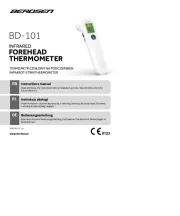
8 September 2025

25 Augustus 2025
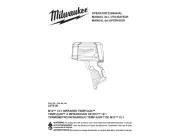
18 Augustus 2025
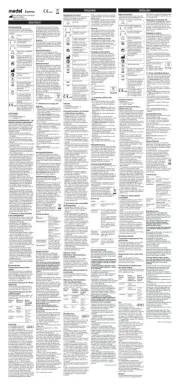
13 Augustus 2025
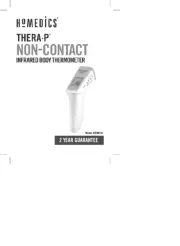
6 Augustus 2025
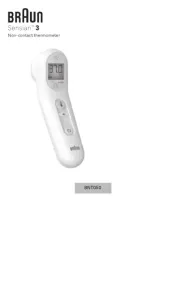
28 Juli 2025
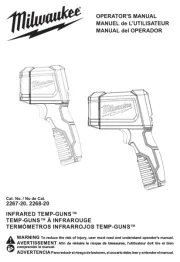
21 Juli 2025
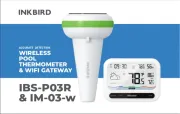
15 Juli 2025
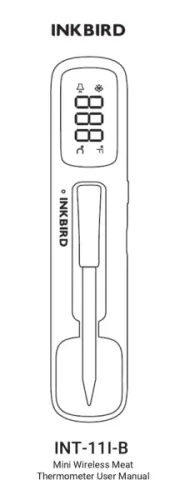
14 Juli 2025
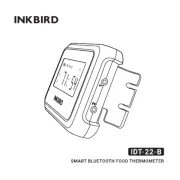
14 Juli 2025